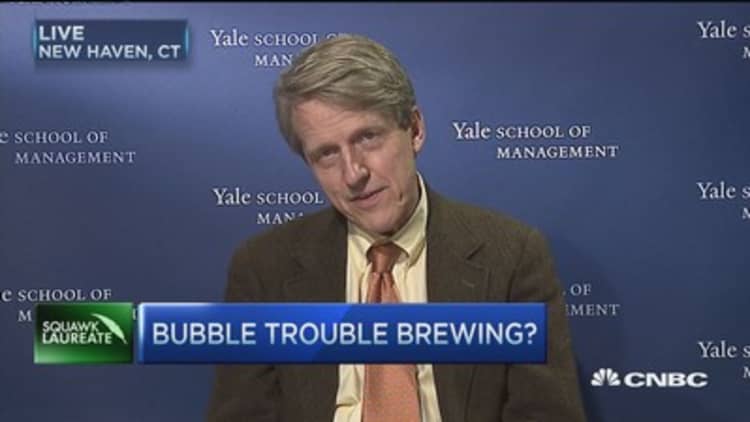
The 2015 version of the U.S. stock market has felt like a six-month thrill ride to nowhere.
In fact, by one measure—the amount of time the has spent above or below 3.5 percent from its starting point—this has been the most boring market ever. Another barometer measuring the amount of triple-digit moves by the Dow industrials tells a different story.
Either way, it's been a weirdly volatile yet flat market, and the really strange thing is this: That could set up nicely for a second-half rally.
The S&P 500 has not at any point this year been up or down more than 3.5 percent, a first for the broad market index, according to an analysis from Paul Hickey of Bespoke Investment Group.
With no other years that were as extreme in their movement around level ground, Hickey looked at 10 other points in time when the S&P 500 changed the least in either direction. He found a bullish bias, with the average gain 6.01 percent and the median 5.63 percent. More tellingly, not one of those 10 years saw a market that finished in the red.
Boring starts, fun finishes for the S&P 500
| Year | YTD change (% as of June 30) | Max YTD gain | Max YTD loss | Rest of Year |
|---|---|---|---|---|
| 2015 | 0.05 | 3.49 | -3.22 | ??? |
| 2004 | 2.6 | 4.12 | -2.5 | 6.23 |
| 1993 | 3.4 | 4.73 | -1.53 | 3.53 |
| 1952 | 5.01 | 5.01 | -2.86 | 6.45 |
| 1992 | -2.15 | 0.88 | -5.42 | 6.76 |
| 1994 | -4.76 | 3.33 | -5.9 | 3.38 |
| 2005 | -1.7 | 1.1 | -6.14 | 4.78 |
| 2014 | 6.05 | 6.2 | -5.76 | 5.03 |
| 2006 | 1.76 | 6.21 | -1.97 | 11.66 |
| 1959 | 5.9 | 6.29 | -2.95 | 2.43 |
| 1965 | -0.74 | 6.51 | -3.72 | 9.88 |
Source: Source: Bespoke Investment Group
The comparatively docile overall picture from the market contrasts with multiple violent daily moves along the way, like the Greece-inspired selloff Monday and the subsequent rebound.
The Dow industrials have seen triple-digit moves in 40 percent of all trading days so far, according to Jeff Saut, chief investment strategist at Raymond James. Similarly, the S&P 500 has had gains or losses of more than 1 percent on 31 of 125 trading days, or 25 percent of the time. In 2014, that occurred just 13 percent of the time.
Saut is a long-term bull who like many others sees a market where smart investors are more concerned with protection from steep losses than trying to mine for big gains.
To that effect, the forecasts for the rest of the year remain primarily in two camps: From the caution of Goldman Sachs, which believes there is little upside left for the market over the next six and even 12 months, and the undaunted optimism of Piper Jaffray, which is not wavering from a 2,350 forecast on the S&P 500 that would require 13.2 percent upside from the current level.






